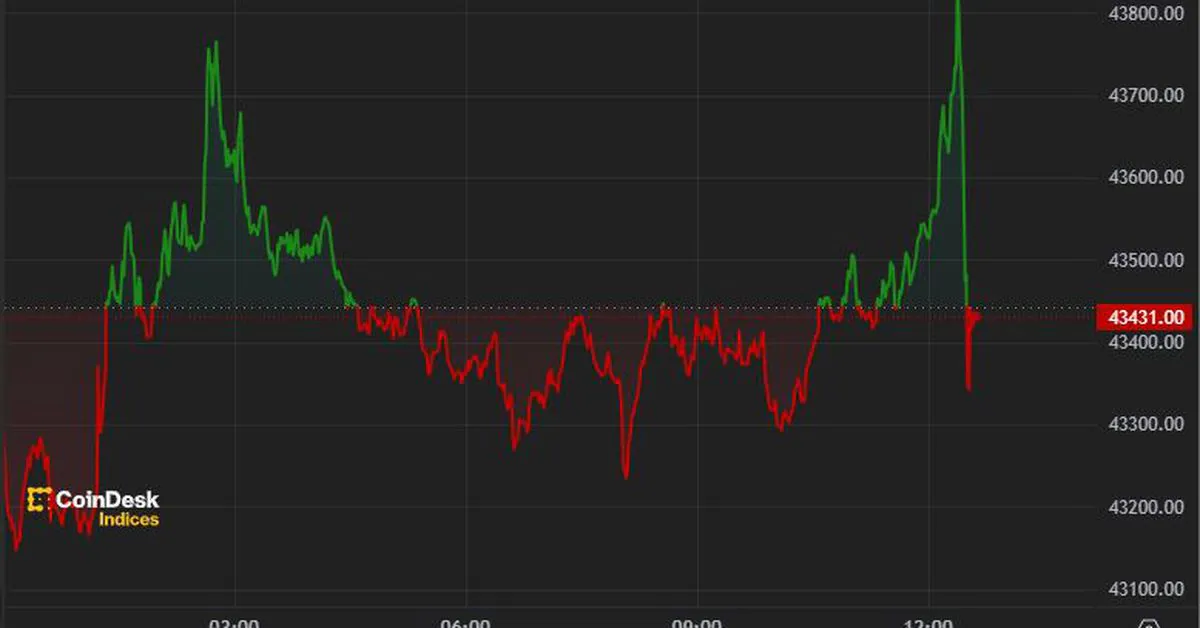MEME is popular, why can’t the Bitcoin ecosystem replicate the diverse gameplay of the Ethereum ecosystem?
Why Can't the Bitcoin Ecosystem Replicate the Diverse Gameplay of the Ethereum Ecosystem Despite MEME's Popularity?
After the inscription market became popular, many people had unrealistic expectations for BTC Layer 2, thinking that BTC Layer 2 would be as successful as Ethereum layer 2?
However, the fact is that the “success” of the Bitcoin ecosystem may remain in the “asset issuance” narrative stage for a long time, and it may be fundamentally unfeasible to replicate the diverse gameplay of Ethereum. Why? Let me share a few technical logics:
BTC and Ethereum belong to two different chain species. The former is a “stateless” chain, while the latter has achieved complex composability of financial business logic based on smart contracts.
- Should we go to the Sandbox or jump on the hot trend of Ronin? Should we go both ways or cling on to the thigh?
- When Social Media Becomes a Battlefield: The Control Game and the Battle for Free Speech
- Unchaining the Unchained The Rebel Miner and the Battle Against Censorship
In order to transplant various financial gameplay such as DEX, Lending, Derivatives, and Aggregators from Ethereum to the Bitcoin chain, it is crucial to build programmable “state + computation + verification” capabilities for Bitcoin.
- State: Currently, the Bitcoin UTXO set can only calculate real-time “balances”, historical balances, and transaction history, and cannot achieve the basic states that make up contracts;
- Computation: The unlocking conditions of the Bitcoin ScriptPubkey script can be regarded as its core computing capabilities, but this computing capability is very limited and it is difficult to express complex business logic;
- Verification: Bitcoin full nodes can verify UTXO balances and script signatures, but they are limited to these basic verifications themselves. The Bitcoin network cannot even verify the specific execution effects of these logic.
In conclusion, in order to implement complex financial applications on Bitcoin, it is necessary to expand based on the limited “capabilities” of Bitcoin and build a programmable framework with “state + computation + verification”.
Looking back at Ethereum’s scaling roadmap, it has gone through multiple routes such as Plasma, Rollup, and Validium, and finally chose Rollup as the mainstream. On the other hand, Bitcoin’s scaling first appeared with block size adjustments and SegWit, which have already been concluded. Currently, it is mainly engaged in disputes over the legitimacy of sidechains like Stacks, client verification of RGB, and state channel verification of the Lightning Network.
Since Plasma sidechains cannot support smart contracts and Validium is too independent to inherit the security of the main network, the Rollup route is able to break through precisely because it can inherit the security of Ethereum DA and be flexible enough to increase the upper limit of TPS. The key is that the main network Rollup contracts can be validated by main network validators, and Layer 2 users also have the right to initiate challenges and withdraw funds. Although some aspects of the practical implementation may not be satisfactory, in theory, the Rollup solution has also gained mainstream market consensus.
In comparison, Bitcoin sidechains, client verification, and state channel verification are currently developing in their own way:
- Sidechain Stacks supports smart contracts and has a wide range of applications, but it is an independent consensus outside of Bitcoin and is difficult to be recognized by the public.
- Client validation RGB follows the main network UTXO model, and off-chain clients can process more complex transactions. However, it lacks bidirectional verification and constraints with the Bitcoin main network, and its development has not gained enough momentum.
- Lightning Network, due to its proximity to Bitcoin core developers, is currently seen as a relatively orthodox scaling solution. However, the development of the Lightning Network has been slow, and the recent introduction of Taproot Assets only runs on the main network, making it difficult to truly implement on the Lightning Network.
If we compare this to the Ethereum model, a mature layer2 solution should be protected by the main network’s security and have a significant scaling effect. The most crucial aspect is the ability to run smart contracts in diverse scenarios. Based on this standard, sidechains, client validation, and state channels all seem to fall short.
- Protection by the main network: Lightning Network > Client validation > Sidechain;
- Scalability effect: Sidechain > Client validation > Lightning Network;
- Contractual characteristics: Sidechain > Client validation > Lightning Network.
Comparing the new doctrine of scaling solutions, it becomes clear: if security is the priority, then it is certain that we have to wait for the Lightning Network to scale. If only scalability is pursued, then there’s no need to try to reform Bitcoin. A suitable sidechain can solve all problems. If we want to consider all three aspects at the same time, client validation with RGB is the optimal solution.
Now the question arises, which roadmap is worth entrusting Bitcoin layer2’s vision:
1) Sidechain: Although it is possible, this is an independent consensus chain, not much different from Ethereum. A logical contradiction arises – we already have Ethereum as a super smart contract verification network, so why create a completely new Bitcoin sidechain? Let Bitcoin remain as the value storage chain while allowing other Ethereum-like chains to expand the development imagination. Wouldn’t that be more perfect? Reverting to the past seems unnecessary.
2) Client validation: Similar to Ethereum’s Rollup, RGB client validation is more suitable for mainstream Bitcoin scaling. This market and its name are still a “black box” at the moment, and it is unknown how much it can develop. It is too early to draw conclusions.
3) State channels: Due to Lightning Labs’ orthodox status, the Lightning Network was once hoped to be the solution for scaling Bitcoin. However, after Taproot Assets, the Lightning Network leans towards a payment network characteristic and may eventually lead to a sidechain solution similar to Ethereum’s Plasma payment network. It is likely challenging to become a layer2 that can accommodate various financial gameplay as imagined.
In essence, trying to transplant Ethereum’s diverse financial gameplay to Bitcoin may be too hasty. The expansion space for the Bitcoin ecosystem may be significant, but it may not necessarily copy Ethereum entirely.
Imagine playing with innovation on Ethereum, but also being influenced by the established dogmatism behind it. And not to mention, Bitcoin, which is even more strict with its dogma and doctrine.
That’s it.
The prosperity of Ethereum layer2 is due to the infinite combinability of its smart contracts, like building with Lego blocks. The biggest risk in this process is consensus overload, but the various possibilities within the payload are enough to provide developers with a broad stage.
On the other hand, the Bitcoin layer2 ecosystem is weak in its basic functionality and has too much expandable space, making it difficult to achieve an adequate level of security consensus. Consensus has both made and broken Bitcoin’s absolute barrier, but it also fundamentally limits innovation within its ecosystem.
Therefore, in this chaos and contradiction, many investors, institutions, and mainstream users may feel lost.
Venture capitalists outside the Bitcoin ecosystem have huge capital but are unable to enter because they don’t know how to tell the narrative of Bitcoin’s development in a logical and sensible way. Developers within the Bitcoin ecosystem are also grappling with indecision between different paths and lack a unified development direction.
Although retail investors are caught up in the FOMO frenzy, they only care about the potential wealth myth created by the release of new coins, and no one pays attention to the act of building itself.
While the asset issuance paths in the Ethereum ecosystem may be diverse, they all revolve around the underlying theme of “value capture.” Whether driven by venture capitalists or retail investors, there needs to be value accumulation in the end.
Similarly, the Bitcoin ecosystem cannot solely thrive in the phase of pure “asset issuance.” Ultimately, there must be continuous technological breakthroughs, ongoing building, and project development.
This market cannot be all about memes.
We will continue to update Blocking; if you have any questions or suggestions, please contact us!
Was this article helpful?
93 out of 132 found this helpful
Related articles
- Beoble in Three Minutes Socialfi’s New Attempt, a Valuable Web3 Chat System
- Thorchain Over Fourfold Increase Draws Attention, Will the Cross-chain Veteran Revitalize Again?
- Analyzing xPet’s design mechanisms and economic system One step away from a great SocialFi product?
- RWA Compliance Observations Is After-sales Leaseback a Legitimate Good Business?
- Kava 15 Upgrade Focus How Zero Inflation Unlocks New Investment Opportunities in $KAVA
- Crypto for Advisors Unleashing the Power of On-Chain Investment Tools and Vehicles
- The most unique flag in crypto history DogeCoin.






